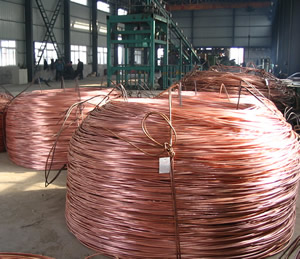 In 2015, Chinese influence on industrial metal prices will be more important than ever before. Yes, they have been a powerhouse in the sector for quite some time, but what has changed over the last couple of years is their surging output after years of production capacity growth. And of the industrial metals China is involved with, copper is imported on a routine basis and plays a substantial role in their metals marketplace.
In 2015, Chinese influence on industrial metal prices will be more important than ever before. Yes, they have been a powerhouse in the sector for quite some time, but what has changed over the last couple of years is their surging output after years of production capacity growth. And of the industrial metals China is involved with, copper is imported on a routine basis and plays a substantial role in their metals marketplace.
Through a skewed perspective, copper trade figures for China might be seen as a sore on the country’s manufacturing health. That being said, copper currently occupies one end on a shifting spectrum of malleable price signals regarding China’s trading practices with metals. So what Chinese trade themes are worth watching this year?
Threatening Exports
During the second half of last year, Chinese exports of base metals took off due in part to the Qingdao port scandal, which involved numerous vows around metal as collateral in China’s shadow banking sector. The conclusive effect was the flight of collateral metal from Chinese bonded warehouses to London Metal Exchange warehouses for safe-haven storage.
China flirts with the classification of products and minimally transformed metal, and uses such exports as a safety valve for surplus while raising red flags for the outside market. Their export flow of “products” soared by 20 percent to 3.67 million tons last year, and by December, reached a record high of 492,000 tons. But in January and February, exports dropped back to 379,000 tons, which are historically high and hint towards an upward trend.
The Complexity of Copper
China is continually a front-runner with any and all forms of copper imports. Their manufacturing demand drives the copper market year in and year out. Typical buyer behavior and demand for copper, both commercial and state, sees the metal as collateral. Imports on refined metals to China totaled 300,000 tons in January, and look to be slowing in February to continue on with their five-month low.
Of course, the post-Qingdao crackdown on collateral financing and buyer fallout from annual to spot contracts have the most dramatic impact on the current situation with copper. But along the way, China’s copper trade profile switch from refined metal to raw materials stirred the pot even more. All three trade segments for China with copper including refined, scrap, and concentrates will have a dramatic influence on the market in its entirety.

















